COVID-19 cases in children are rising, according to the American Academy of Pediatrics (AAP). While most cases of coronavirus in children are asymptomatic or mild, it doesn’t stop parents from worrying. Should parents be worried about the spike? Is there anything we can do to keep our children safe aside from face masks, social distancing, and good hygiene? And what should we do if a child does get the virus?
This author spoke to two experts: Dr. Pierrette Mimi Poinsett, MD, a pediatrician and medical consultant at Mom Loves Best, and Dr. Nitin Desai, a private practitioner and chief medical officer at COVID Pre-Check, to find the answers to these and other questions:
How Serious is the Spike?
Varda Meyers Epstein: There has been a spike in COVID-19 cases in children. Exactly how serious is this spike?
Dr. Pierrette Mimi Poinsett: According to the American Academy of Pediatrics, over the past two weeks, 1/14/21-1/28/21, there was a 12% increase in child COVID-19 cases (305,643 new cases, spiking from 2,511,132 to 2,816,775). Children represent approximately 12% of all cases of COVID-19.
This is not an alarming increase. The majority of cases are either mild with minimal symptoms or asymptomatic (without symptoms).
Dr. Nitin Desai: Children are more likely to be infected and as contagious as adults. The seriousness comes from the ability of Children to spread the virus, as many of them have minimal or no symptoms when infected with COVID.
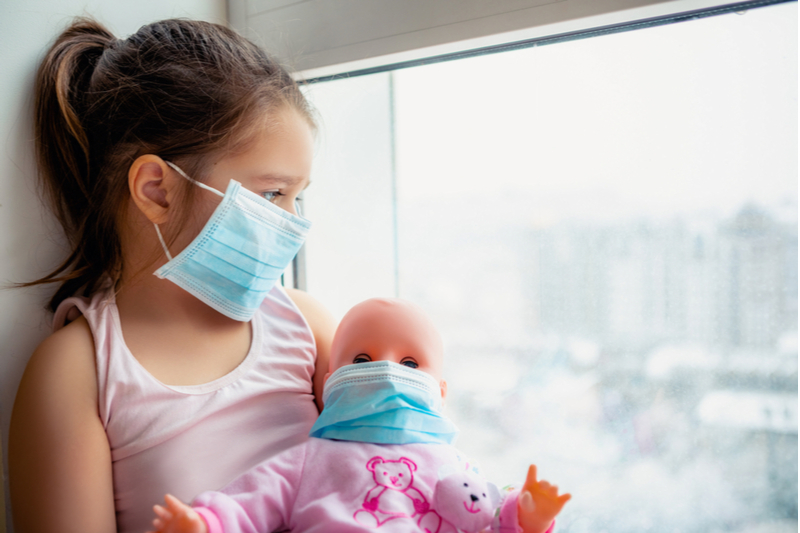
Does My Child Need Emergency Care?
Varda Meyers Epstein: What should parents watch for during the spike and beyond, and how can they know when a child needs hospitalization?
Dr. Pierrette Mimi Poinsett: Seek out emergency care if your child is breathing rapidly, has bluish lips or face, shows an inability to awaken or to stay awake, shows confusion, or has chest pain or pressure. Call ahead to the emergency room to let them know a child with COVID-19 is coming.
Hospitalization usually occurs when a patient is unable to maintain proper oxygenation.
Dr. Nitin Desai: Children and adults experience similar symptoms of COVID. Children’s symptoms tend to be cold-like and mild. MIS-C (Multisystem Inflammatory Syndrome in Children) is a rare but serious condition in children with COVID 19 and symptoms and signs include a fever lasting more than 24 hours, vomiting, diarrhea, stomach pain, skin rash, fast heartbeat, rapid breathing, red eyes, swelling or redness around lips and tongue, feeling very tired, headache, dizziness, and enlarged lymph nodes. Emergency warning signs of MIS-C are inability to wake up or stay awake, difficulty breathing, new confusion, bluish lips or face, and severe stomach pain. Emergency services should be promptly called if these symptoms are observed.
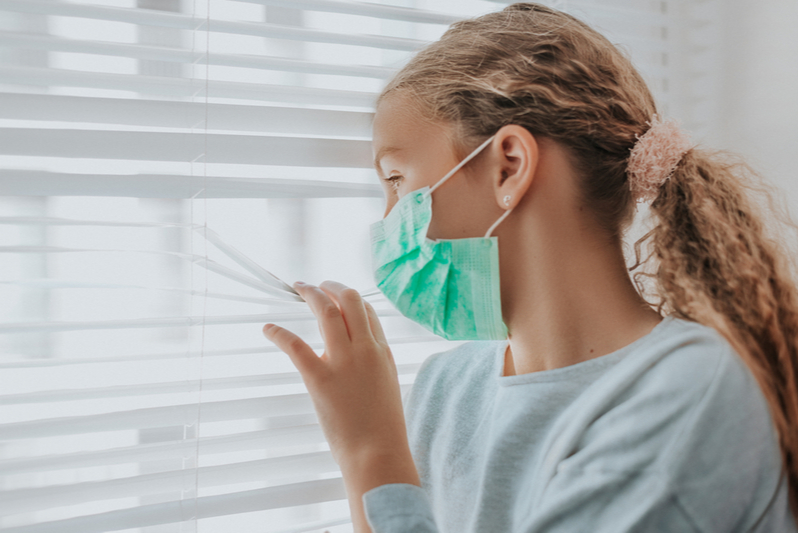
What Can I Do to Keep My Child Safe?
Varda Meyers Epstein: What can parents do, aside from urging kids toward good hygiene, social distancing, and face masks, to keep them safe from COVID-19?
Dr. Pierrette Mimi Poinsett: These are the main things to do to prevent COVID-19 transmission. If your child is going to the playground or outside to play, make sure they are wearing a mask, and wash their hands thoroughly for 20 seconds after they play outside.
Dr. Nitin Desai: Parents can be good role models by following routine precautions and making handwashing, social distancing, and wearing masks a family activity. Limit in-person playtime and connect virtually with other children. In-person playtime should only be with the children of other families who are performing these same preventive measures.
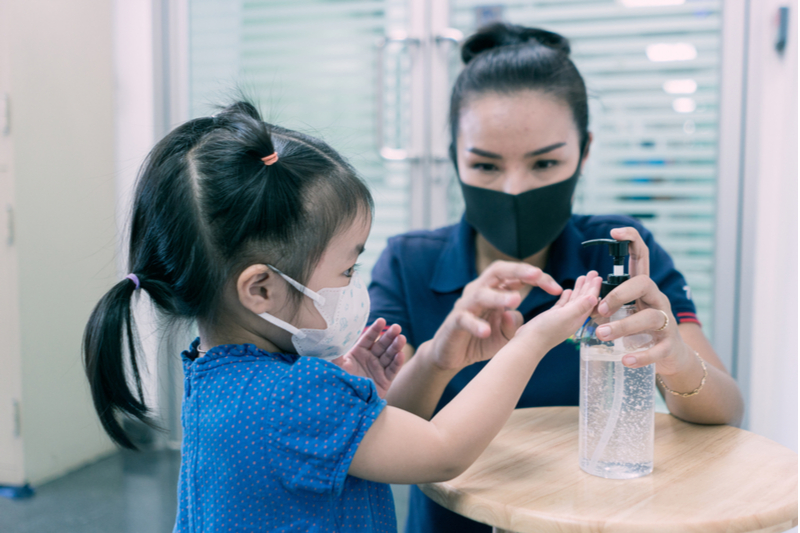
How Can Parents Avoid Catching COVID From Kids?
Varda Meyers Epstein: How can parents keep themselves safe from contagion when caring for their children with COVID-19?
Dr. Pierrette Mimi Poinsett: Keep the child in a separate room if possible. This includes eating in a separate room. Children over 2 years of age should wear masks when not eating. Wash utensils used by a child with gloved hands and hot water.
Caregivers should wear a mask when around an infected child. Disposable gloves should be worn by a caregiver when in contact with a child or with their body fluids, for instance mucus, saliva, urine, stool, or vomit. After contact with body fluids, dispose of gloves in a lined trash can and wash hands immediately for 20 seconds.
It is important to wash hands often, and to avoid touching the eyes, nose, and mouth. If soap is not readily available, use hand sanitizer containing at least 60% alcohol. Frequently clean and disinfect (at least daily) surfaces that are high touch, including doorknobs, light switches, handles, desks, toilets, faucets, sinks, and electronics.
Do not share dishes, cups/glasses, silverware, towels, bedding, or electronics (such as a cell phone) with the person who is sick.
Dr. Nitin Desai: Infected or suspected cases in children need to be treated with the same caution as for adults if home quarantine is recommended by the physician. Try to have only one person care for the child so others are not exposed. Isolation in a room, dedicated bathroom and sink, and keeping surfaces and belongings clean is recommended. Wearing a mask for children older than 2 years of age, social distancing, and frequent handwashing—especially after any contact with a person or objects used by a person— should be a habit and parents should provide an example. Children wearing masks, for their own safety, should not be left unsupervised.
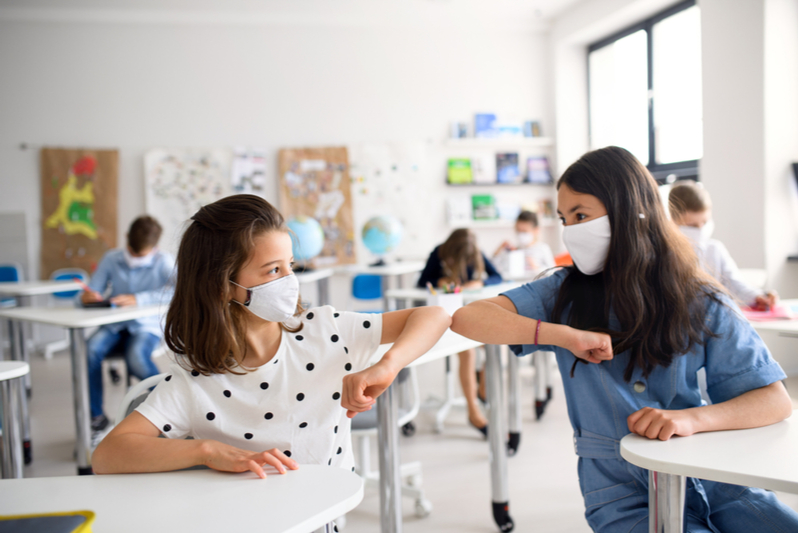
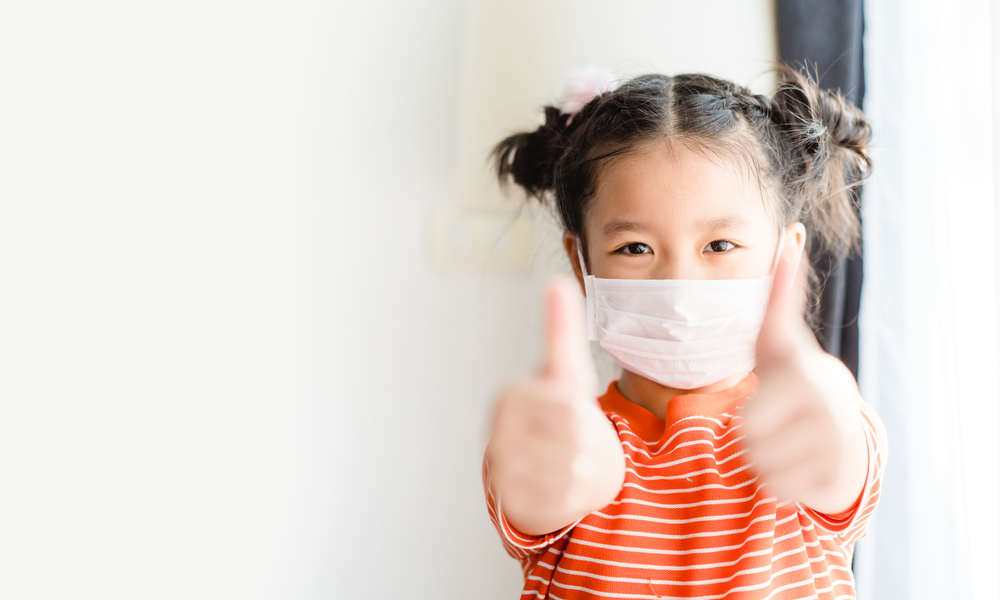
Your statistics are reversed! The latest results showed a 12% DROP in pediatric COVID-19 cases. Combined data of 10 states show a reported rate of 211,466 cases the week of 1/7-14/2021 falling to 140,162 cases the week of 1/21-28/2021.
I know statistics are hard for the layperson, but as a physician who disputes the reopening of schools while wild variants continue to pop up all around us, I know how the opposition takes a single thing misspoken or out-of-context and steamrolls over absolutely correct data. While the pediatrician may have spoken from her practice findings, they do not reflect the drop in cases nationwide.
Whether you think you should be held to journalistic standards, or you should just be Fox News Cavalier is only for you. For those of us relying upon accurate reporting of facts, such a gaff cannot go without rebuttal. Even though I think the schools should open AFTER teachers have had a full course of vaccinations, and therefore disagree that the current spike is disappearing and “we can resume life as usual”, I personally cannot tolerate such blatant misrepresentation. Either discuss this with your source, submit a retraction, or unequivocally double down on your case with statistics that prove it. The DATA from the AAP doesn’t agree!
The statistics cited in the piece are CORRECT and were taken from the AAP website: https://services.aap.org/en/pages/2019-novel-coronavirus-covid-19-infections/children-and-covid-19-state-level-data-report/
“Change in Child COVID-19 Cases*
“140,162 new child COVID-19 cases were reported the past week from 1/21/21-1/28/21 (2,676,612 to 2,816,775)
“Over two weeks, 1/14/21-1/28/21, there was a 12% increase in child COVID-19 cases (305,643 new cases (2,511,132 to 2,816,775))”